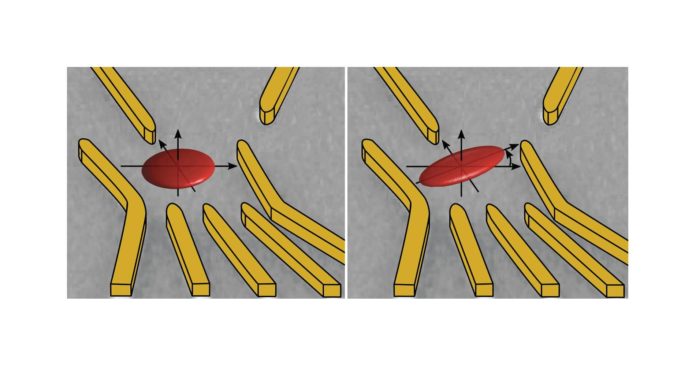The spin of an electron is a promising candidate for use as the smallest information unit (qubit) of a quantum computer. Controlling and switching this spin or coupling it with different spins is a challenge on which various scientists are working. The stability of a single spin and the entanglement of different spins depends, in addition to other things, on the geometry of the electrons—which was previously difficult to determine.
In an experiment by the University of Basel, scientists for the first time have determined the geometry of electrons in quantum dots. They have developed a method that enables them to show the probability of an electron being present in a space. This allows improved control of electron spins, which could serve as the smallest information unit in a future quantum computer.
Quantum dot, also known as an artificial atom- potentially trap confining free electrons and allows them to behave similarly to electrons bound to an atom. It holds electrons using electric field.
Using spectroscopic measurements, scientists were able to determine the level of energy within a quantum dot. They then examined the behavior of these levels in magnetic fields of varying strength and orientation. Based on their theoretical model, it is possible to determine the electron’s probability density and thus its wave function with a precision on the sub-nanometer scale.
Daniel Loss from the Department of Physics and the Swiss Nanoscience Institute at the University of Basel said, “To put it simply, we can use this method to show what an electron looks like for the first time.”
Scientists thus gain a superior comprehension of the connection between’s the geometry of electrons and the electron spin, which should be steady for as long as conceivable and rapidly switchable for use as a qubit.
Professors Dominik Zumbühl said, “We are able to not only map the shape and orientation of the electron but also control the wave function according to the configuration of the applied electric fields. This gives us the opportunity to optimize control of the spins in a very targeted manner.”
“The spatial orientation of the electrons also plays a role in the entanglement of several spins. Similarly to the binding of two atoms to a molecule, the wave functions of two electrons must lie on one plane for successful entanglement.”
“With the aid of the developed method, numerous earlier studies can be better understood, and the performance of spin qubits can be further optimized in the future.”
The study is published in the Physical Review Letters and the related theory in Physical Review B.
